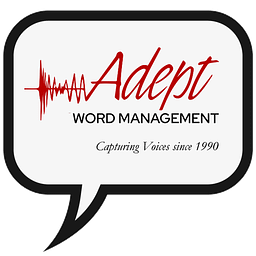FAQs Friday!!!
Hi everyone!!!
We thought it would be helpful to send a summary of the inaudibles we had this week so this way we can learn something new every week, and maybe one of these inaudibles will appear in the next interview you’re transcribing, and it’ll save you some time!
We all know how much time we spend researching things, so everything helps! 🙂
We also want to include some of the questions you ask us, hoping our answers might help you in the future.
1- AREN’T ACRONYMS TRICKY?
– Unless they—LDRs took days, too.
LDR? What is that?
Well, you might be interested to know that the LDR rate is the number of departures minus those delayed for maintenance reasons, divided by total departures.
Check out this link!
2- WHAT HAPPENS WHEN SOMEBODY MENTIONS PHRASES IN A LANGUAGE THAT’S NOT ENGLISH?
Well, we do our research, of course! This week, Meia deserves a gold star for this one 🙂
– I spoke a little bit of the language. I could still—[???00:14:05_Speaking Korean].
What was the veteran saying, you might be wondering? Well, he said, “Annyeong Hasimnikka,” which means good day in Korean.
What languages do you speak???
3- THIS WAS A COMPLICATED ONE!
So the glass industry was in a city called [???inaudible___00:45:39]. [in former Czechoslovakia]
Not easy, right?
So John stepped in and said this:
I’m hearing Neugablonz, but this is complicated – Gablonz is a glassmaking city in Czechoslovakia. Neugablonz is a glassmaking center founded by refugees from Gablonz after the war, but it’s in Germany. I’m definitely hearing that extra syllable at the start of the word though – is there any chance he’s talking about the one in Germany?
And Beth added some more information:
I think John’s nailed it, he’s right, it IS complicated. There is no Czechoslovakia anymore; they separated in 1993. Gablonz was in the Sudentenland, which was one of Hitler’s first moves:
The Sudetenland (/suːˈdeɪtənlænd/ German: [zuˈdeːtn̩lant]; Czech and Slovak: Sudety) is the historical German name for the northern, southern, and western areas of former Czechoslovakia which were inhabited primarily by Sudeten Germans. These German speakers had predominated in the border districts of Bohemia, Moravia, and Czech Silesia since the Middle Ages. Sudetenland had been, since the 9th century, an integral part of the Czech state (first within the Duchy of Bohemia and later the Kingdom of Bohemia) both geographically and politically.
We’re doing some serious detective work here!
Did you learn something new today? I really hope so!

